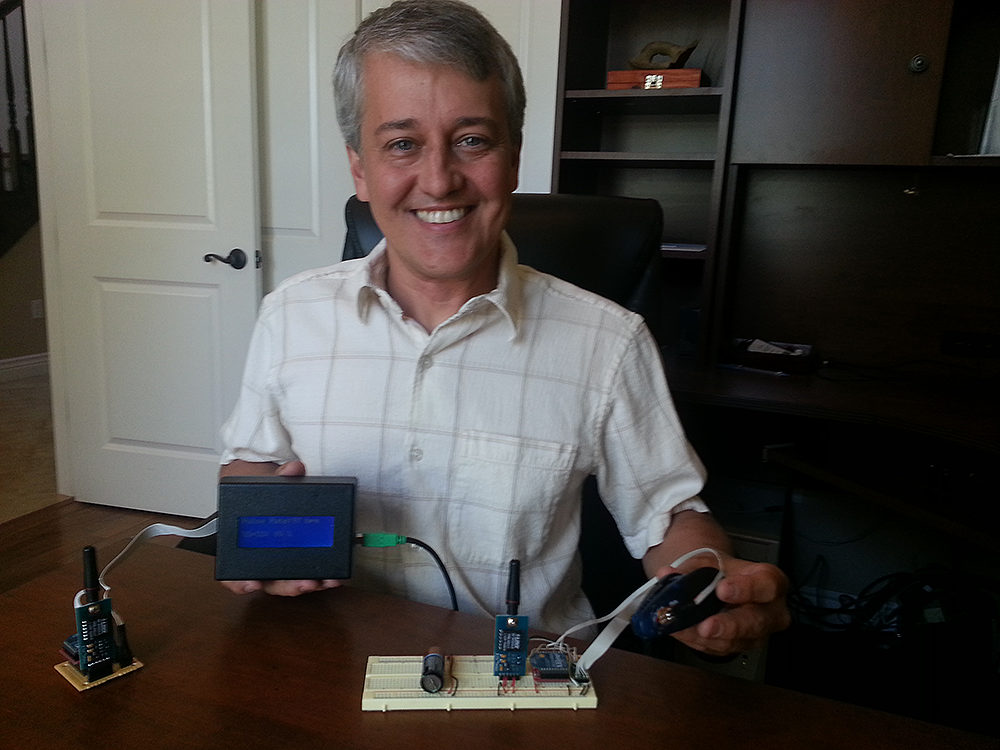My wife recently gave birth to triplets. They were ten weeks premature and were in the Neonatal Intensive Care Unit for a month. While there, they were connected to monitoring equipment to monitor their heart rate, respiratory rate, temperature, and at times blood oxygen levels. At times their heart would stop briefly which would trigger an alarm, and a nurse would come to the rescue. This is a common occurrence among premature babies. The babies were not released from the NICU until they went at least seven days without one of these events. But how would I know if this happened while they were at home? What I needed was a heart rate monitor.
I searched the internet for a heart rate monitor that was affordable for the average consumer. The few I did find were expensive and could not be used unless the baby was supervised by an adult. This was because of the risk of strangulation from the wires connecting the baby to the monitor. There needed to be a wireless transmitter on the baby that would not interfere with the baby’s movements, such as on his or her foot. Such a device could also be used to alert a parent of other life threatening conditions such as Sudden Infant Death Syndrome (SIDS). That is what prompted me to build a wireless pulse oximeter.
The project appears to work, but further testing needs to be done. I need to be able to lower my oxygen level significantly to establish my own empirical data. I am using a store bought pulse oximeter to calibrate my project. When I hyperventilate I can make the store bought unit climb to ninety-nine percent SpO2. I then hold my breath as long as I can, and I can make it get as low as eighty-four percent. This same procedure on my project yielded similar results. When I hyperventilated my project went to ninety-nine percent and when I held my breath, it dropped as low as seventy percent. This is obviously wrong, but it is responding. I adjusted the linear equation to reflect a more accurate SpO2 value. My project now follows the store bought unit, but I can only test it in that small range. The pulse rate is very accurate and follows the store bought unit very closely.
There is room for plenty of improvements if I had more time. A smaller transceiver module would be a great improvement. I think I could put the whole system on a small Bluetooth HC-05 module, and it wouldn’t be much bigger than the battery pack. This could be strapped to a baby’s foot, and the results would be sent to the base unit via Bluetooth serial data. Some programming improvements could be to monitor the status of the remote unit and display an error message if needed. Another improvement would be to display a message when the finger is removed from the sensor instead of displaying the last known results.

